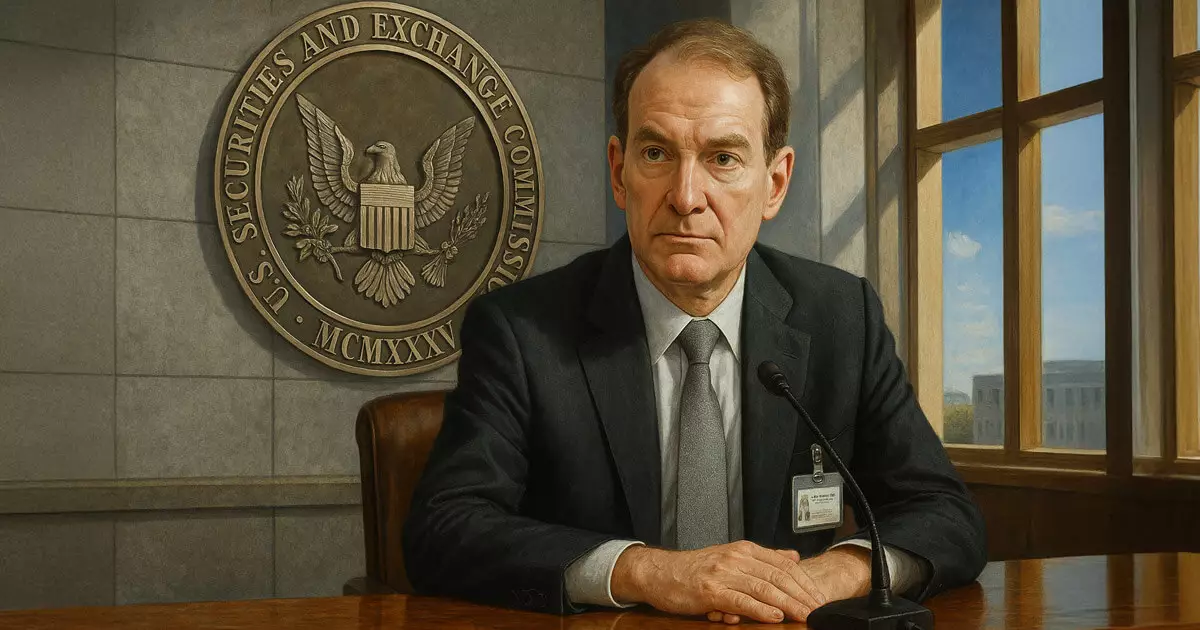The recent announcement by SEC Chairman Paul Atkins marks a pivotal shift in the agency’s strategy toward digital assets, and it’s about time. For years, the crypto industry has been held hostage by a regime characterized by an adversarial “shoot-first-and-ask-questions-later” approach. This strategy not only sowed distrust but also stunted innovation by making it perilous for businesses to forge ahead amidst lingering ambiguity. Atkins’s message is clear: innovation should be encouraged, not feared. This change aligns with the progressive ethos of modern finance wherein traditional frameworks must adapt to accommodate new technologies. His intention to draft tailored regulations for crypto is a breath of fresh air in an industry that has been long overdue for constructive guidance.
A Streamlined Future for Financial Services
Atkins’s vision for a streamlined regulatory framework that permits the custody and trade of both securities and digital assets under a single regulatory umbrella holds significant promise. This could vastly simplify operations for firms and lower costs for consumers. The idea of a “super-app” future in financial services is tantalizing; imagine the convenience of managing both traditional and digital assets in one platform without the bureaucratic hurdles that currently exist. The ability to navigate this duality seamlessly could further enhance market efficiency, opening the floodgates for innovation and investment. For those who remain skeptical about crypto’s place in mainstream finance, it’s vital to recognize that a well-regulated crypto environment could lead to greater financial inclusion and accessibility.
Ending an Era of Confusion
Atkins’s critique of the SEC’s previous handling of digital asset firms highlights a glaring failure of governance. The lack of clear guidance and the propensity to issue subpoenas without interaction created a regulatory black hole. By veering away from opaque enforcement tactics toward transparent engagement, Atkins is striving to rebuild trust. Such a shift is not merely cosmetic; it lays the foundational work necessary for a robust, functioning ecosystem where companies can thrive without the looming threat of arbitrary penalties. This is particularly significant for smaller firms that have faced existential crises due to the SEC’s unpredictable style of enforcement.
A Future of Collaboration
A key aspect of Atkins’s new era at the SEC is the commitment to collaboration with industry stakeholders. The previously emphasized model of enforcement has been dismantled, paving the way for genuine partnership between regulators and innovators. This collaborative spirit is essential for fostering a vibrant digital asset ecosystem. Everyone from seasoned institutional players to budding startups stands to benefit from an environment where open dialogue replaces fear-driven compliance. By empowering those within the industry to contribute to regulatory conversations, the SEC can create rules that are not only effective but also practical in real-world scenarios.
Rethinking Strategy and Structure
Atkins’s decision to dismantle the SEC’s FinHub, which some viewed as ineffective due to its enforcement-heavy focus, signals a strategic reevaluation. By embedding innovation priorities within the broader agency structure, the SEC can ensure that the regulatory landscape is proactive rather than reactive. A shift like this, when combined with an earnest commitment to engagement and dialogue, positions the SEC as a forward-thinking regulator focused on the future of finance rather than being mired in outdated frameworks.
In a world where technology continually reshapes finance, the SEC’s new approach could serve as a model for regulatory bodies worldwide. Embracing innovation while ensuring protective measures can coexist is the essence of contemporary governance.



















Leave a Reply